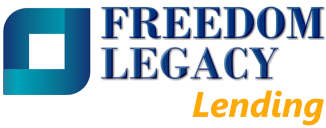

When a mortgage lender approves a loan, it has ensured the applicant has sufficient funds for the downpayment, closing costs, and reserves — extra funds available in case of an emergency.
The funds must belong to the applicant.
Mortgage underwriters are trained to unearth unacceptable sources of funds, undisclosed debts, and financial mismanagement when examining your bank statements.
You are much more likely to get mortgage-approved if your bank statements are clear of anything questionable.
1. Bounced checks
If your checking account is littered with multiple overdrafts or NSFs (non-sufficient funds) charges, underwriters are likely to conclude that you’re not great at managing your finances.
Mortgage rule-making agency Freddie Mac says that additional scrutiny is required when bank statements include NSF fees.
FHA loans require lenders to manually re-approve borrowers with NSFs, even if the borrower has already been approved by a computerized system.
2. Large, undocumented deposits
Outsize or irregular bank deposits might indicate that your downpayment, required reserves or closing costs, are coming from an unacceptable source.
The funds might be borrowed. For instance, you could take a cash advance on your credit card, which might not show up on your credit report.
Borrowed funds will incur additional monthly payments. Borrowing a downpayment is allowed, you just have to disclose it.
A large deposit could also indicate an “illegal” gift. A home buyer can’t take help from a party who stands to gain from the transaction — the home seller or real estate agent.
Fannie Mae’s Selling Guide says, “When bank statements (typically covering the most recent two months) are used, the lender must evaluate large deposits, which are defined as a single deposit that exceeds 50 percent of the total monthly qualifying income for the loan.”
Likewise, Freddie Mac lists “recent large deposits without acceptable explanation” as red flags about which lenders should follow up with the applicant.
If you can’t prove that the source of that big deposit is acceptable under the program guidelines, the lender must disregard the funds and use whatever is left to qualify you for the loan.
If the verified funds aren’t enough to qualify you for the loan, you’ll need to save another chunk of cash — from an acceptable source.
If you did receive a large deposit recently, you may want to wait 60 days before applying for a mortgage. At that point, the funds become “seasoned,” meaning they are now your funds, despite the source.
It’s still not a good idea to take funds from a party with interest in the transaction. That breaks a myriad of other rules. But if your family member paid you back for a recent vacation, or you sold a car to your aunt and didn’t document it, waiting 60 days could be a solution.
Verify your new rate (Feb 27th, 2019)
3. Regular payments, irregular activities
Watch out for a monthly payment that does not correspond to a credit account disclosed on your application.
Typically, your credit report will pull in your credit cards, auto loans, student loans, and other debt accounts. But some creditors don’t report to the major credit bureaus.
For instance, if you got a private, personal, or business loan from an individual instead of a bank, those debt details may not show up on your credit report.
The monthly $300 automatic payment on your bank statement, however, is likely to alert the lender of a non-disclosed credit account.
“VOD”: Why verifications of deposit don’t solve all bank statement issues
Verifications of Deposit, or VODs, are forms that lenders can use in lieu of bank statements. You sign an authorization allowing your banking institution to hand-complete the form, which indicates the account owner and its current balance.
VODs have been used to “get around” bank statement rules for years. But don’t count on them to solve the above-mentioned issues.
First, the lender can request an actual bank statement and disregard the VOD, if it suspects potential issues.
Second, depositories are also required to list the account’s average balance. That’s likely to expose recent large deposits.
For instance, if the current balance is $10,000 and the two-month average balance is $2,000, there was probably a very recent and substantial deposit.
In addition, there’s a field in which the bank is asked to “include any additional information which may be of assistance in determination of creditworthiness.”
That’s where your NSFs might be listed.
There are good reasons to double-check your bank statements and your application before sending them to your lender. The bottom line is that you don’t just want to be honest — you want to avoid appearing dishonest.
Your lender won’t turn a blind eye to anything it finds suspicious.
